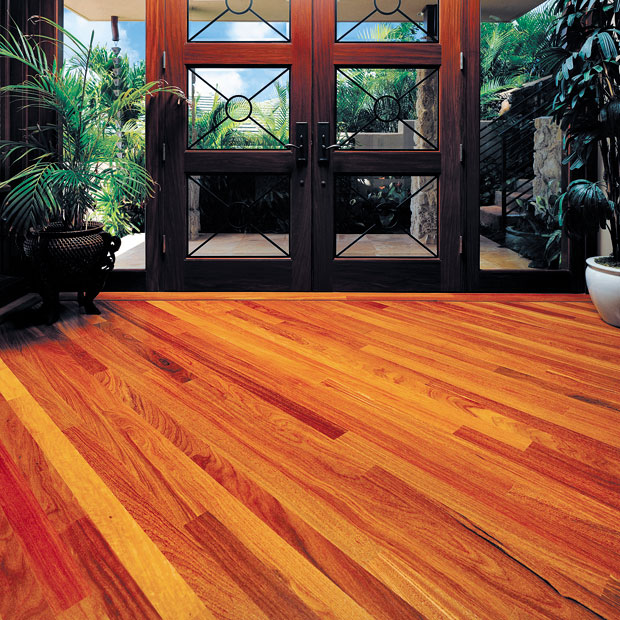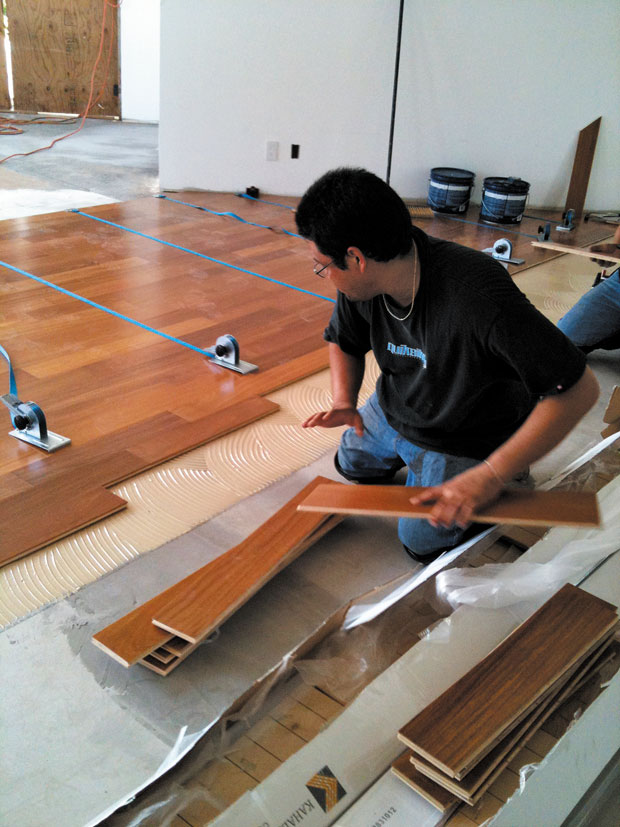A new experience in flooring, installation
Have you finally decided to get a new floor, but don’t really know what to expect? Selecting the right flooring materials is just the beginning. For you to really enjoy your purchase, it must be installed properly with all of the necessary steps taken to assure that your investment is professionally completed.

The first step is to find a qualified installer. Licensing by the state of Hawaii assures the public that these individuals or businesses have the skills necessary to render their services to you in their specialty area. They are also required to carry insurance for your protection and participate in a system that provides for recovering damages should something go wrong.
After you have made your selection, here are a few highlights of what you can expect as well as things to look out for.
First, there is demolition. The old flooring usually needs to be torn out, but in some cases, you might be able to go right over existing wood, stone or vinyl. A lot depends on the condition of the existing flooring and if the increase in height due to layering would cause any problems. Except for carpet, the next step — if your subfloor is on-grade or close to it — is to do a moisture test to see if water vapor levels are excessive and to address those conditions before work moves forward. Even tile and stone have an upper limit for moisture of 14 pounds per 1,000 square feet.
Next, the flatness of the floor needs to be considered. Low spots need to be filled in and high spots need to be ground down. The more flat-to-flat contact you have, the more stable your floor is. The National Wood Flooring Association (NWFA) standards require no more than a 3/16-inch variation in 10 feet. Any more than this and you will have soft spots and creaking.

Depending on the material you selected, the next step is to follow NWFA, North American Tile Council (NATC) and manufacturer’s installation instructions. Stone and tile is laid in a bed of thinset. Wood flooring, depending on the type, could be nailed, glued or floated. Laminates and vinyls are all floating floor systems. With all of these floors, it’s not only important to have appropriate transitions (finishing off ends) for aesthetics but also for safety. For wood, laminates and vinyls, baseboards or other perimeter moldings are needed to cover the expansion gap.
As you can see, there is a lot to know about flooring and its installation. For more in-depth information, Kahala Pacific Floors’ monthly Wood and Stone Flooring 101 seminar is an excellent source of reliable information for the informed consumer. Call 847-7711 to reserve your seat for the next session on Saturday, Aug. 17, at 10 a.m.
KAHALA PACIFIC FLOORS
contact // 847-7711
address // 926 Kohou St.